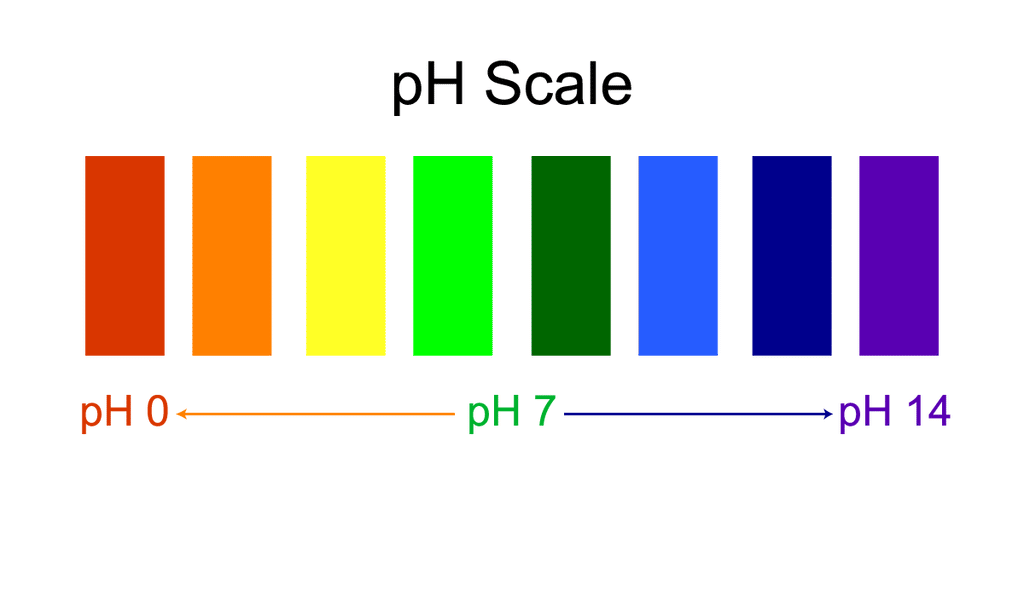3 Key Steps to Properly Adjusting pH in Your Water and Nutrient Mix

What is pH and why is it important?
Here at Black Dog LED we receive many gardening questions; one frequently asked is: "What's up with pH, and should I worry about it?" While the subject might seem daunting, grasping the basic aspects doesn't have to be difficult. Let's briefly consider the reasons why pH is important to your garden, and some practical ways to work with pH. As part of our review we'll define pH, explore why it matters, proper ways to measure and adjust pH, what tools to use, attention to safety, and a few tips we've found useful. By practicing good pH procedures, you can really maximize the potential of your garden.
Simply put, pH matters because it directly affects whether or not a plant can use water nutrients. The standard pH scale is from 0 to 14, with 0 being extremely acidic, and 14 extremely alkaline or basic. In the garden, most of us work with pH in a range between 4 and 8, and most plants have a sweet spot somewhere between 5.2 and 6.7.
So why should you care about pH? pH (pouvoir hydrogen) or "potential power of hydrogen" can have a huge impact on your garden's success, from disease resistance to the texture of your soil. pH is best known for the effect it has on nutrient availability and plant uptake. If the pH of a fertilizer solution and/or surrounding media is too high or too low the result can be slow, weak and malformed growth. Extreme levels of acidity and alkalinity (pH) can cause some nutrients to become toxic, even killing plants. For growers using beneficial bacteria and fungi such as those found in compost teas, and in "living" or "super soil", it's important to understand that without the right pH, beneficial microbes cannot thrive and multiply.
Simply put, pH matters because it directly affects whether or not a plant can use nutrients. If the pH of your fertilizer solution is off, no matter the quality, cost or how many additives you use, the plant will not be able to make use of them. The chart below shows the relative availability of different nutritional elements as pH changes:

Just like temperature, humidity, and light cycles, pH should be monitored closely and often to ensure a happy and prolific garden. Similar to other environmental conditions, a rapid change in pH can cause disastrous results.
Soil vs. Solution pH
This article focuses on pH with respect to watering and fertilizing. However, it is important to note that the pH of your soil or growing media should not be overlooked. For example, Rockwool is too alkaline for most plants to survive in without first being soaked in a mild acidic solution. Furthermore, a soil with an unbalanced pH will encourage bad microbes, while a well-balanced media will provide an environment for beneficial bacteria and fungi to thrive. pH can even effect the way soil particulates "adhere" or combine with each other, possibly leading to compacted growing media.Proper Tools for Adjusting pH (pH meter – strips, pens, handheld meters)
There are many ways to test your pH. The most commonly available tools are litmus paper/pH test strips, pH indicator solutions, non-digital meters, and digital meters. The first two methods are great for getting a ballpark range of your pH. Both methods rely on a reaction between the testing paper or indicator liquid and the nutrient solution. The resulting color is compared against a key such as the figure below.

An advantage of these testers over other methods is their relatively inexpensive cost, that they never need to be calibrated, and do not require special care or cleaning. These "ball park" testers will provide consistent results. Among the disadvantages are an inherent lack of precision, and an inability to accurately measure a mixture that is not transparent, contains dyes, or has a high level of organic matter. Fertilizer with added dyes especially risks erroneous results since the dye can discolor the indicator.

Many analog (not digital), hand-held meters are easy to find and inexpensive, however they are not accurate enough for horticultural purposes, especially for measuring the pH of a liquid and should be avoided.
Digital pH meters and pens are the best option for accurate measurements and a sound investment. Without going into too much detail, digital pH meters read pH by measuring the interaction between a fluid inside a semipermeable glass tube (similar to a mercury thermometer) and the solution it is measuring. Digital meters are readily available and cost anywhere from $20 on up. As with most precision instruments, with pH meters "you get what you pay for". A high quality meter, kept clean, calibrated regularly, and stored in the correct storage solution will save you time and money. It will also give you the best chance of successfully managing pH. The BlueLab Combo Meter is a high-quality pH meter for plants that we all recommend and use in our own gardens.

Some Safety Tips
Before we cover how to properly adjust pH, it is important to remember the chemicals we will be working with are caustic and need to be handled carefully. Here are a few important safety guidelines:- Never combine concentrated pH Up and pH down.
- Never add water to acid, only acid to water.
- Do not store acid (pH up) and bases (pH down) in the same area.
- Do not consume or allow pH up or pH down to contact your skin. If a strong acid or base does come in contact with skin or clothing, wash the area immediately. Contact poison control if ingested or if it contacts your eyes.
- Always dispose of hazardous materials properly and according to local laws and regulations.
- Never work without the proper protective gear, especially protective eyewear and gloves.
Proper Measuring and Mixing of Nutrients
Below are the basic steps for properly mixing and prepping nutrient solutions; however, individual fertilizer manufactures may have different, very specific pH requirements. We highly recommend following all manufactures' guidelines closely. Too many gardens have suffered from "Mad Scientist Syndrome", more is not better and the nutrient manufactures should be the experts and include detailed instructions for a reason.-
Water- Fill your reservoir, bucket, or other container with plain, cold water. Use a carbon filter (such as a Hydrologic Small Boy) or reverse osmosis filter (such as Hydrologic Stealth R.O.) if your water quality is poor*. Allow the water to reach room temperature. The addition of an air stone or water pump at this time will help oxygenate the water and raise its temperature, while helping to get rid of (off-gas) any residual chlorine or other undesirable dissolved gasses.

-
Nutrients- Start adding the concentrated nutrients in the water one at a time. Never mix nutrients together at full strength. At this time you can use a water pump or air stone to help mix the solution, or simply stir vigorously after each addition. If using bottled or dry nutrients, without organic compounds, the solution should be agitated well for at least 5-10 minutes or until completely dissolved. In some cases, days of mixing and aeration may be necessary for complex organic formulas, and compost teas. Thoroughly mixing the fertilizers and other additives together until they are completely dissolved ensures a consistent, accurate reading. One rule of thumb, if your nutrient program includes multiple parts, the bottle of "Micro" nutrients is typically added first. Lastly, always wash out measuring utensils before adding the next nutrient or additive.

-
Adjusting pH- After your fertilizer is prepared to the desired strength (you can test strength using a ppm or EC tester), and the temperature is stable, start by testing the solution's pH. Use a digital pH pen for the best readings, setting the pen or wand in the liquid until it is the same temperature, then depending on the result, add a very small amount of pH Up or pH Down. Stir the solution and wait 5-10 minutes while it mixes with the fertilizer, and measure again. Keeping track of how much you added the first time and the resulting change will give you a general idea of how much pH Up (base) or pH Down (acid) you will need to add to reach your target number (5.7-6.2). Some utensils we have found particularly useful when working with acids and bases include plastic 1-5 ml pipettes, plastic syringes, and small measuring cups. Glass accessories should be avoided as they can cause inaccurate readings during calibration, and can have dangerous interaction with strong acids. As a side note, some additives and nutrients are very acidic or alkaline by nature. When using silicon (Si) or products with fulvic/humic acids for example, special attention should be taken.

Steps for Adjusting Water pH Without Nutrients
When you don't need to fertilize your plants but they still could use a drink, adjusting the pH of the "plain" water is still important. With or without nutrients, the pH of whatever you pour onto your plant matters. If you are using tap water or filtered water (not RO water PH or distilled water) to properly adjust the pH, follow steps #1 and #3 from above. It is important to know that using Reverse Osmosis, Distilled, or other "0 ppm" water by itself is bad for plants, as it leaches away essential ions. We recommend never watering with "pure" water without first adding a small amount of nutrient or additive to act as a "buffer", or it could kill your plants. After adding the buffer, follow steps #1 and #3 to attain proper water pH.* Examples of poor water quality are sources with a large amount of dissolved solids (very hard water / water with a high ppm), toxic chemicals (such as metals from well water), or city water with treatment chemicals added (such as chlorine, chloramine, fluorine, fluoride, even herbicides are added to reservoirs in some areas to keep algae at bay). Using only cold water avoids contaminants such as sediment from water heaters and pipes.






